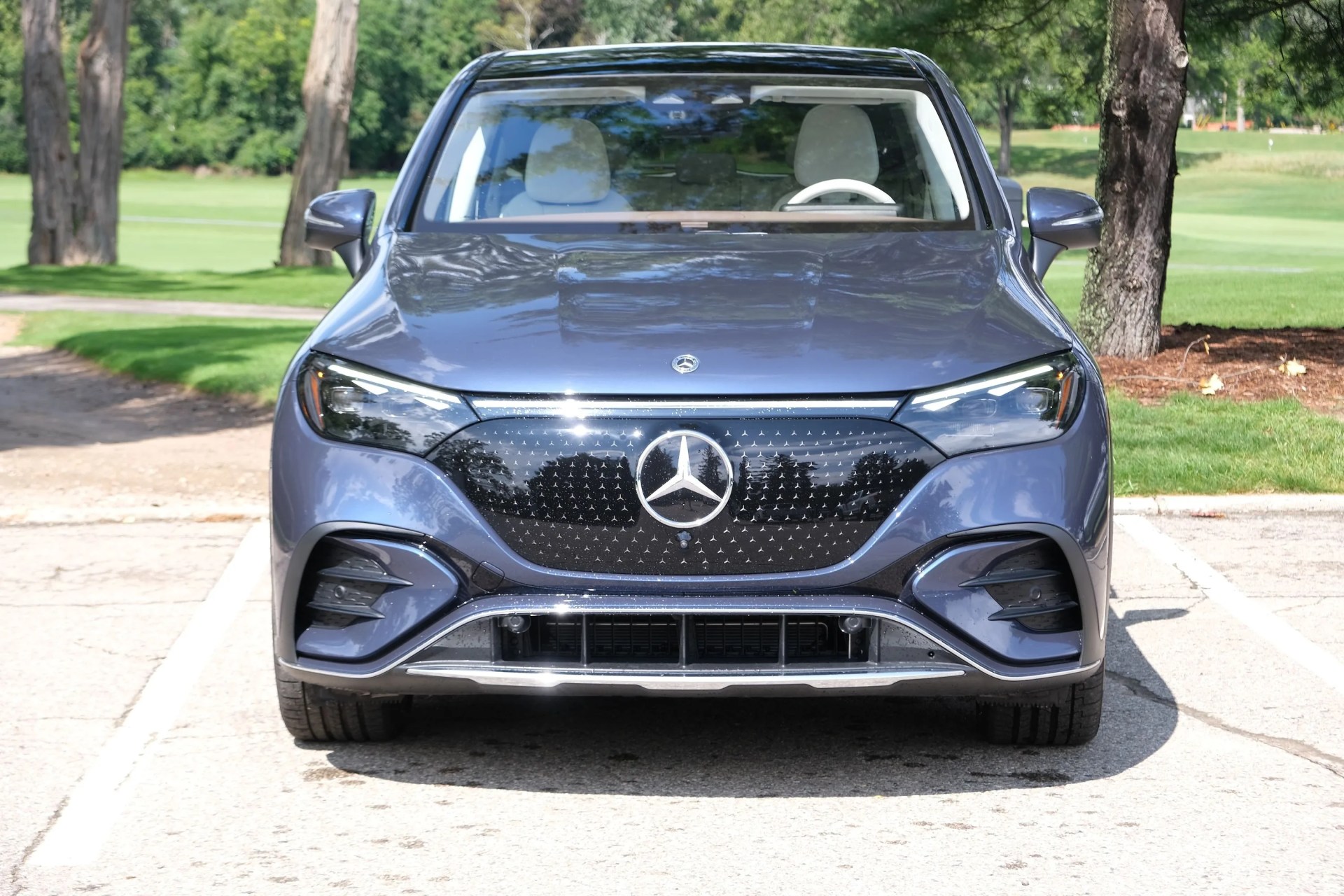Mercedes is going all-electric by 2030. And that will mean a complete overhaul in the lineup. We’ve seen the flagship EQS sedan and EQS SUV models, corresponding to the S-Class and GLS-Class in the Mercedes lineup. The more mass-market offerings — at least for the time being — are the midsize EQE sedan and EQE SUV.
Both the EQE and EQE SUV use the same platform and the same electric powertrain options. Both start at an identical $77,900 price point with all-wheel-drive (the EQE offers a cheaper single-motor version, which the EQE SUV doesn’t have in America). Is one of them the better buy? I drove all-wheel-drive versions of both the EQE 350 sedan and the EQE 350 SUV to suss out the differences … which are, admittedly, subtle.
To learn more about our testing methodology and how we evaluate products, head here.
I think the EQE SUV is better-looking, but it’s very close
 Tyler Duffy
Tyler DuffyThe looks for all of the Mercedes EQ cars have been polarizing. We don’t know which specific brand the Polestar 3’s designer was referring to when discussing “potato-shaped” EVs, but both the EQE and EQE SUV fit that aero-first, aesthetics-as-an-afterthought camp. And the looks could be a main reason the EQ cars — according to a Mercedes dealer — lack the “lust factor” of the combustion models.
I think that criticism is fair. The rounded shapes of the EQE and EQE SUV don’t provide much gravitas and would be hard to read as premium if the giant three-pointed star were removed. Subjectively, I think the cars look good from the front, rear and side profile; things get a bit weird when viewing them from the quarter angles.
Deciding which is better is a tough call. I’d give a slight edge to the EQE SUV. I think the difference is expectations. Crossovers are bland and formless anyway; the EQE sort of fits that mold. But I have a firm conception of what a Mercedes sedan should look like, and the EQE sedan looks more like a Toyota Prius than anything else from some angles.









